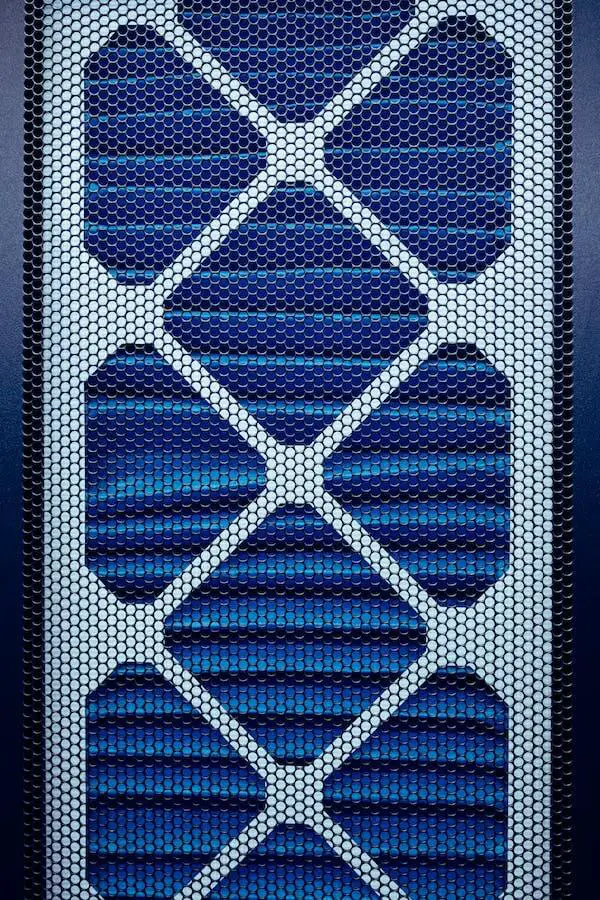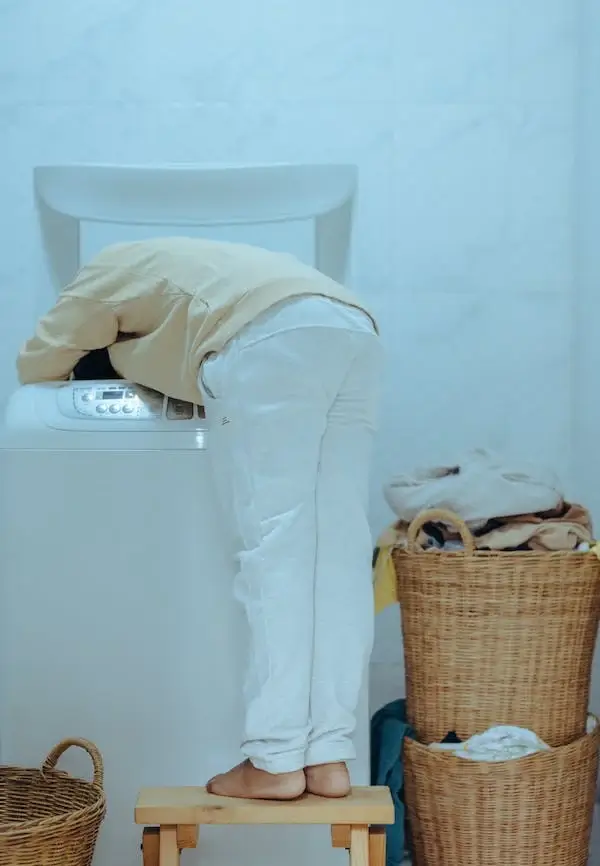All GE appliances spell reliability, durability, high performance, and exciting features. So, if you just acquired a washer from the same brand, you have high efficiency, high quality, and longevity assurance. The only setback you might experience is the GE washer not draining. Of course, this can scare you out of your laundry room. But with a proper diagnosis, it is easy to resolve.
GE washer not draining may be due to a blockage on the drains, imbalanced load, control board error, drain pump issue, and other plumbing problems. To resolve the problem, you must follow various steps, beginning with the most obvious; clogged drains. Let’s help you to correct this mess.
GE Washer Not Draining Due To Clogged Drains
Is your backyard drain clogged? Your washer will not let dirty water evacuate. This problem may affect other drains, including your kitchen and bathroom pipes with the same plumbing line. The causes range from feminine hygiene products to fat and grease from your kitchen drain.
Roots from nearby trees might also be messing up with your drainage pipes. Your GE washer not draining may be a symptom of a complex issue. The unclogging process will thus depend on what is clogging your drains. Luckily, an experienced and licensed plumber can help resolve the mystery. Before you engage a professional, you can try a few tricks.
GE Washer Not Draining Due To Roots
If trees are near your sewer line, inspect the pipes to determine if roots clog the drain. The most straightforward sign that your pipes are experiencing a tree root capture is a bubbling sound in the sewer line. In addition, the ground may be moist. Dig around the moisture and address the issue. You can prevent this damage by not keeping trees near the sewer line.
Sanitary Hygiene Products
Baby diapers, sanitary pads, bathroom tissue rolls, and pieces of fabric can block your plumbing pipes. That’s another major cause of GE washer not draining. The sinks and hand wash basins may also not drain. The products have fibers that do not rot, thus clogging the drains. The best way to prevent this issue in your home is to responsibly dispose of sanitary hygiene products. Teach your household the best way to dispose of pads, tampons, diapers, and old clothes.
GE Washer Not Draining Due To Fat And Grease
Fat and grease from your kitchen or garage are not friendly to plumbing lines. The oily substances attract other residues, build up and clog your drainage system. With time, even your GE washer stops draining.
To unblock the system, boil water and pour it down the drain. You can first spread baking soda or vinegar in the kitchen sink before you pour the water. That melts all the fat and grease and disintegrates the buildup.
Lint And Hair
Lint can be disastrous to your drains. In extremes, the accumulation causes a total blockage, which affects your washing machine and dishwasher drains. Though unavoidable, there are ways you can prevent lint and hair buildup in your drains and blockage.
Sweep hair out of your floor, filters, and the bathroom sink. Proper disposal in the trash can ensure that all your drains are free from lint and air. Mostly, the accumulation is visible on the floor traps and sinks. Pick them with a tweezer and dispose of them in the litter can.
Lid Switch/Lock
Ge washer not draining or spinning is an obvious sign that the machine’s door and switch are disengaged. The washer comes with a switch and a lock as a safety feature during operation. If these are faulty or you didn’t lock the door well, the unit will not begin to wash. Or, if the locks become loose mid-washing, the draining may not happen.
Whenever you load your machine, ensure that you lock it well. The door should be intact until the end of the washing cycle. If the door is loose or not locking, check if the hinges are disengaging and tighten them. Otherwise, contact your plumber or GE appliances if it is much more complex than you can handle. They will guide your way forward.
Imbalanced Load/Inclined Machine
GE washing machine not draining can be an indicator of an imbalance load. The reason is the load hangs on one side, which could elevate the elevates, thus causing draining issues. Dirty water from your wash cannot get out properly.
The same issue happens when your machine is not balancing on the floor due to inclination. If your floor is not flat, your washer will not lie parallel to the ground. The machine’s outlet or drainage hose may stay higher.
It is easy to resolve this issue. When installing your washer, position it on level ground and balance your load. Ensure that the drain hose is not too high or too low so it doesn’t interfere with the draining process.
Also, the hose should not be higher than the washer’s top. Your GE user manual comes with installation recommendations. Follow them for a smooth draining. If this trick doesn’t work, it could be a blocked pump filter.
GE Washer Not Draining Due To Blocked Pump Filter

Another cause for your GE washer not draining is a pump filter blockage. Like the drains, the filter can get jammed with lint, hair, debris, and other foreign objects. The only solution to a blocked pump filter is to unclog it. Below are the steps;
- Plug off your GE washer.
- Locate the filters at the bottom of the washing basket. Some models have a filter under the agitator.
- Hold the filter cover and remove it by pulling it from the machine. Some models have a childproof filter that only comes out after unscrewing, so first determine your washer.
- When you remove the filter, it will have lint and other residues. Remove the buildup with a towel; use a toothbrush to scrub the filter if it is thick.
- Remove the filter cover and soak it in hot soapy water to avoid stubborn residues.
- Check if the tub and agitator have leftover lint and clean it.
- Assemble the filter and fix it back.
- Run an empty cycle to be sure that your GE washer is draining. If not, it could be a control board error or other plumbing issues.
Control Board Error
Your GE front load washer not draining can happen due to a control board error. The commands could be having an error and not telling your washer when to drain. This issue is complex, especially if it is a breakage. But you can first reset the washer to clear any bugs.
If a reset does not solve the problem, report the issue to GE appliances. Do not embark on opening the control panel and trying guesswork. The panel is the heartbeat of your washing machine. If you interfere with the programs, it can lead to a longtime issue. So, always talk to an expert if you notice that the control board has an error, more so that it doesn’t clear after a reset.
How to reset GE washing machine? Turn off the circuit breaker or unplug your washer and wait for two minutes before restoring power. Easy!
Clogged Drain Pump Impeller
A small item like socks or a handkerchief can attach to the drain pump impeller. That prevents the feature from working. While checking the filter, you can inspect the impeller and remove any objects or residues blocking the unit. Inspecting your washer for debris and other types of buildup should be a routine practice to keep it functional.
Frequently Asked Questions
Q: Why is my ge washer not draining?
A: The machine won’t pump dirty water out if your GE washer’s drain hose has a bend or a clog. You must straighten the bend and unclog the residues interfering with the water flow. To work on the machine’s drain hose, unplug the unit from the power source and do the inspection. Call a plumber if it is more complex than you can handle.
Q: What causes a washer not to drain?
A: The most common causes for a washer not to drain are a blocked pump filter, clogged piping, imbalance load, and a faulty door or lid switch. To resolve the draining issue, inspect the washer, remove the objects blocking it, and close the door appropriately. As a maintenance practice, clean your washer once every month to ensure no blockage.
Q: How do you reset a GE washer that won’t drain?
A: You can use the hard reset process to resolve a drain issue. Plug off your GE washer for about two minutes before restoring the power. The control panel will reset and clear the issue.
Parting Shot
There are many causes for the GE washer not draining. The most common is a blockage on the pipes and pump filter. It could also be a control panel error. If the pump impeller has trapped pieces of clothes, the washer will develop draining errors. We are sure that the troubleshooting tips we have shared in this guide can help to fix the issue. If the problem persists, it is wise to contact GE Appliances or a qualified tech to fix it. Always ensure that you follow the user manual when attempting any troubleshooting steps.


